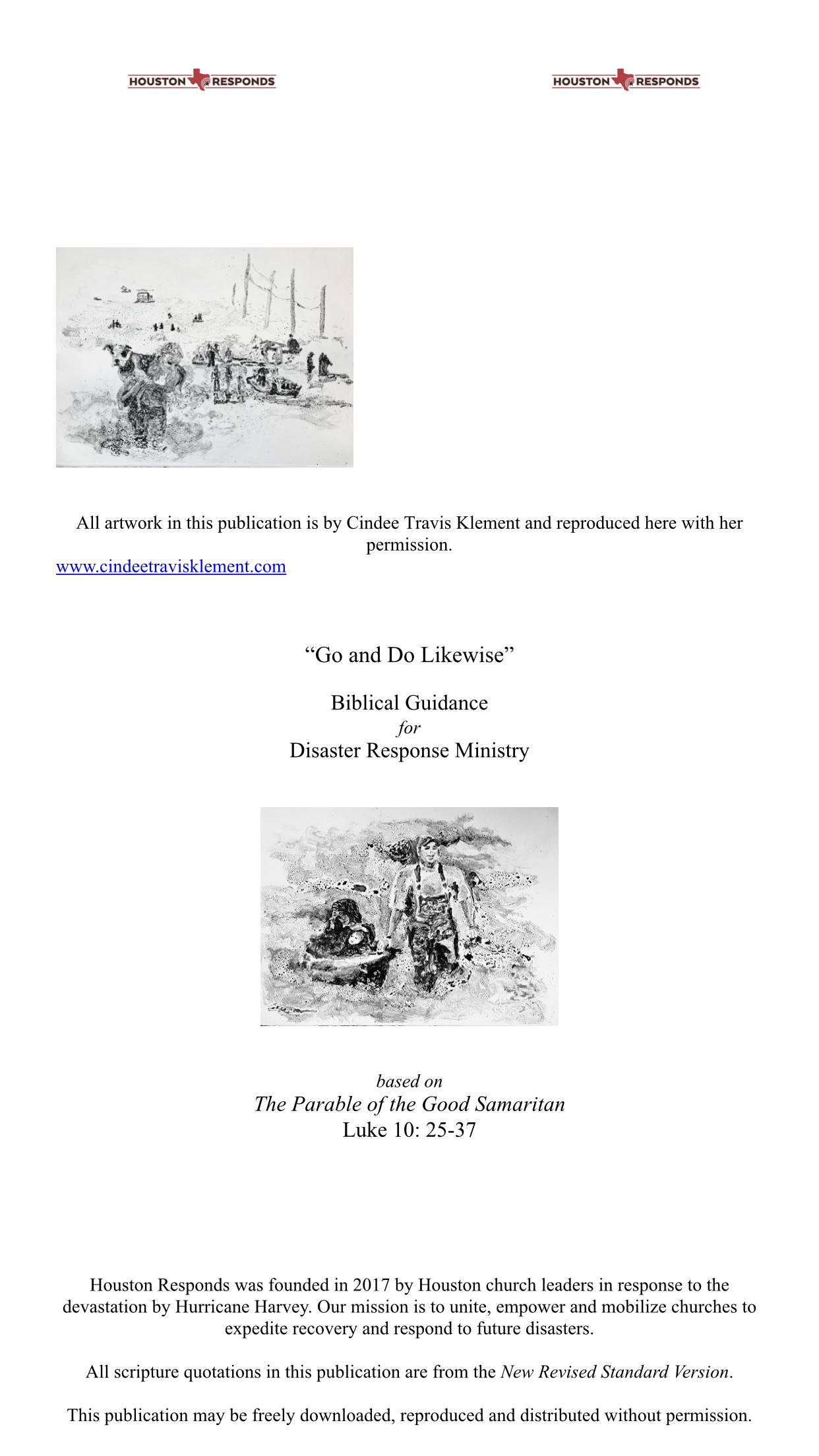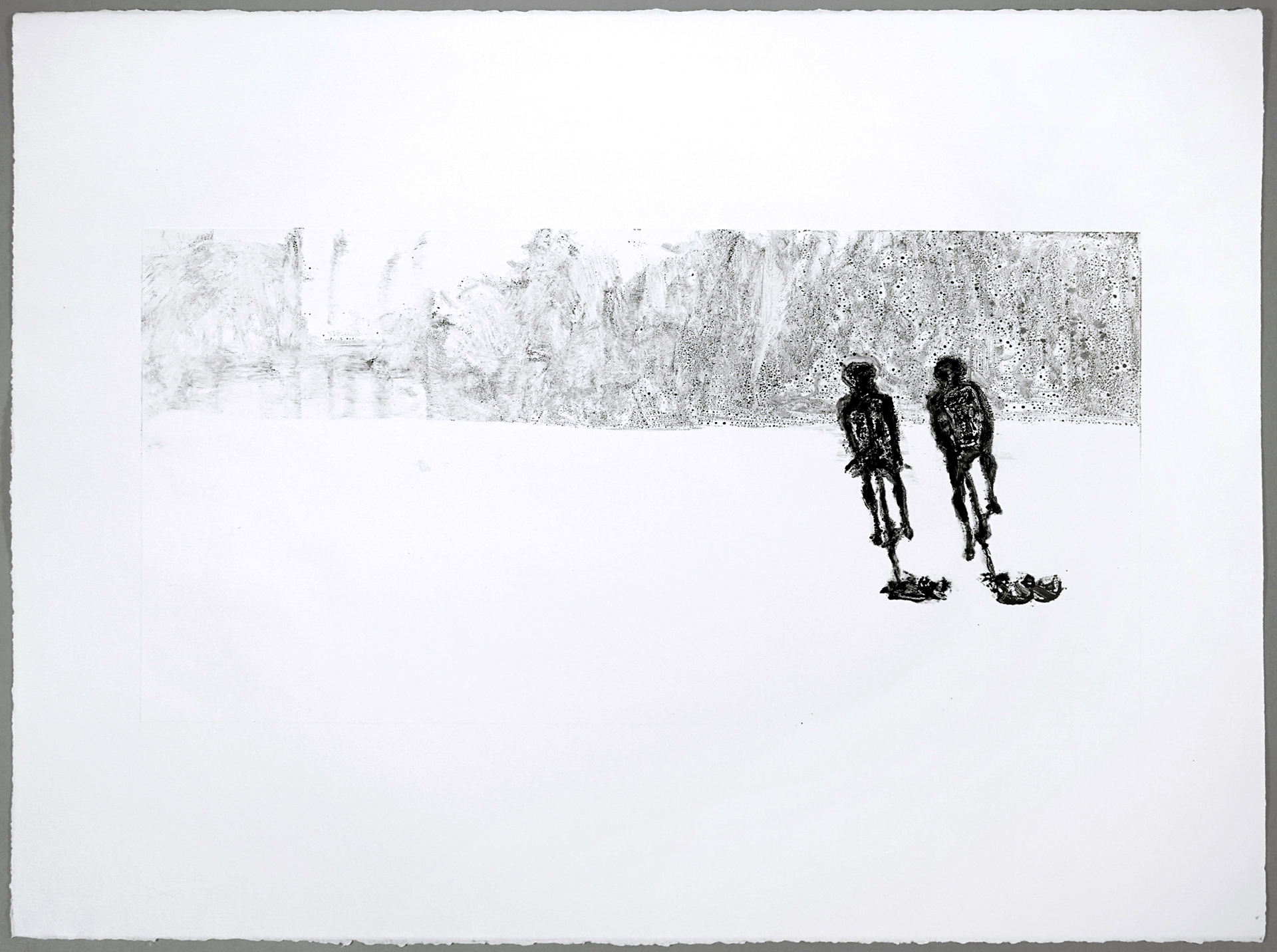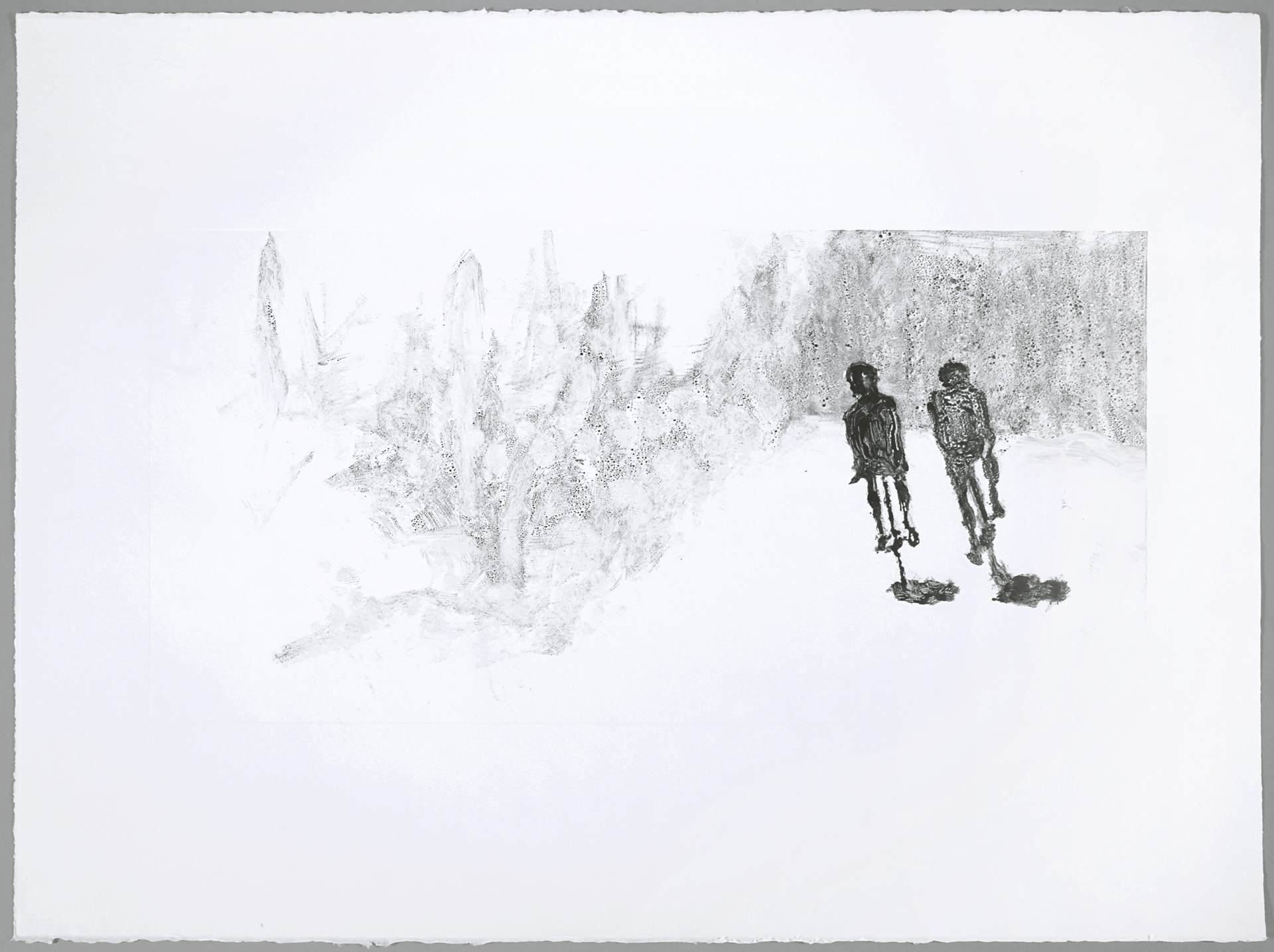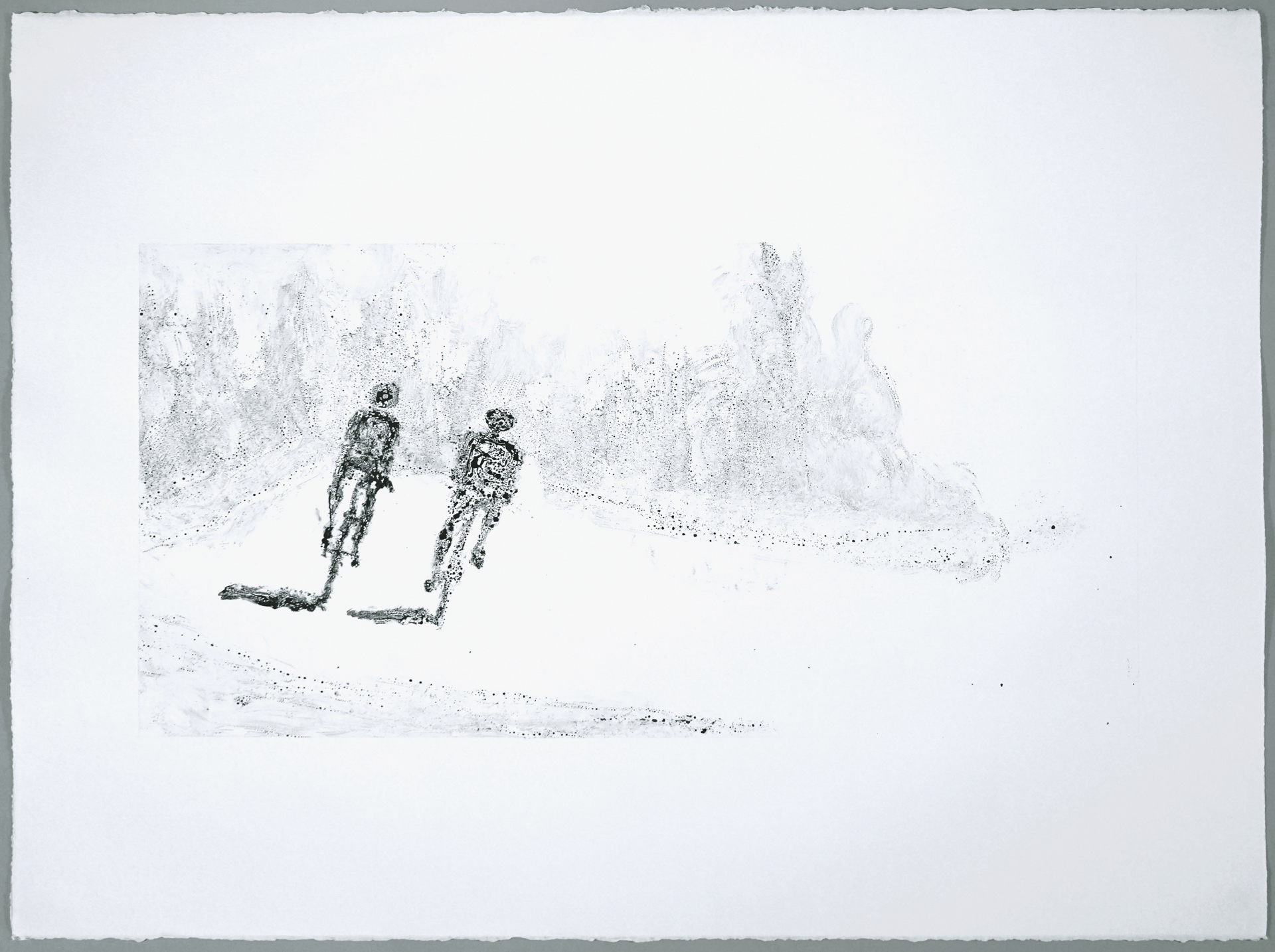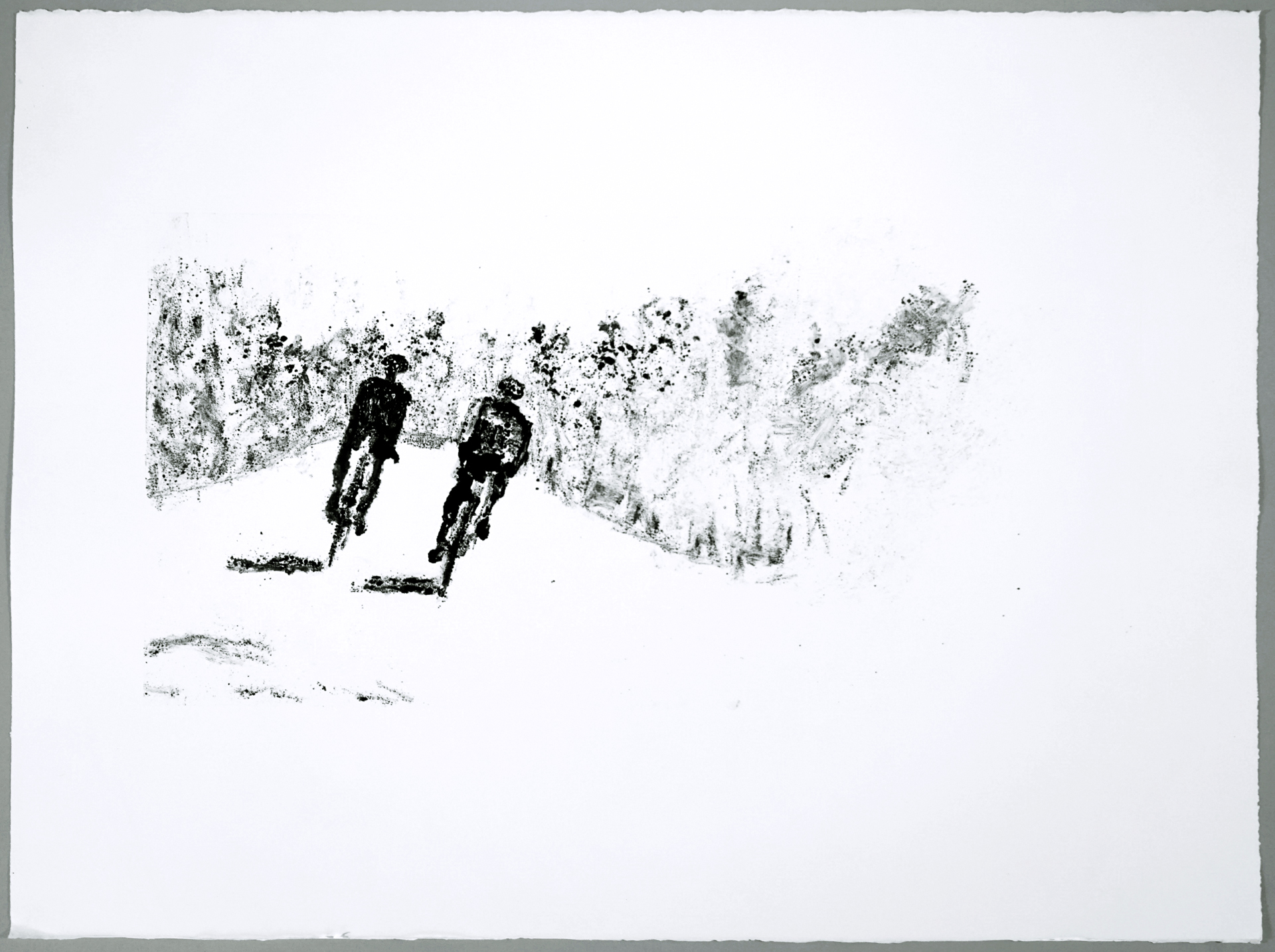In my original body of work “Harvey Heroes” the installation. I paid specific attention to selecting images for inspiration from all ethnic backgrounds. During the Hurricane Harvey flood rescue, racial, political gender and religious tensions were washed away. They were not part of the conversation, we were one people. That was the silver lining of Hurricane Harvey, that was what raised our Texas spirit above the flood line. Seeing people of all backgrounds helping each other made me proud to be from Houston. In the installation piece the process I use to get the abstract fluidity marks, dilutes the diversity of skin tones. I feel this process addresses skin tones as Harvey did. The work is very abstract and does not show the details that might define a particular ethnic background, again the spirit of Harvey.
The exhibition opening was pushed back 30 days, with the extra time I decided to add a few LIVEstock pieces. There were not a lot of images from Harvey of livestock rescues on social media so I created a few of my own.
I regretted I had not made a buffalo calf rescue piece. Saving the buffalo is my thing. Not long after making the decision to make a buffalo rescue piece I saw an image posted on Instagram of a black cowboy wearing a white hat. Immediately I thought how cool it would be to have a black cowboy rescue a buffalo calf. A white hat would separate a darker skin tone from my murky floodwater background, plus my new 44” X 30” paper and plate would help show more skin tone characteristics than the 22” X 30” pieces that compose the installation.. When I told Curtis what I was planning he, immediately, reminded me of the Buffalo Soldiers. He suggested I visit the Buffalo Museum to make sure it would be acceptable during today’s sensitive times to reference Buffalo Soldiers. The people at the museum were very busy so I did not bother them. I did consulted with one of my friends, artist Romeo Robinson; he liked the idea.
This piece has multiple layers of meaning. It brings attention to the importance of tending to animals in rural environments when floods occur. It brings attention to saving the buffalo from extinction and it addresses regenerative agriculture. Most importantly, it is an opportunity to celebrate and acknowledge the brave men who served our country in the military; the Buffalo Soldiers. They were given the name Buffalo Soldiers by the Native Americans, because the Buffalo Soldiers were as tough, fierce and brown as the American buffalo. They were admirable Americans. They deserve accommodations. While at the buffalo Soldier Museum I learned that the US government has never given the Buffalo Soldiers any accommodations for their service. They fought in the Civil War and WWI, This piece celebrates heroes on a multiple of levels.
The piece below, the African-American cowboy is rescuing a buffalo calf. The white cowboy hat and white shirt separate the black skin on his face from the chaotic weather in the background.
I made one monotype and two ghost monotypes. See below.
I hope you like them.































